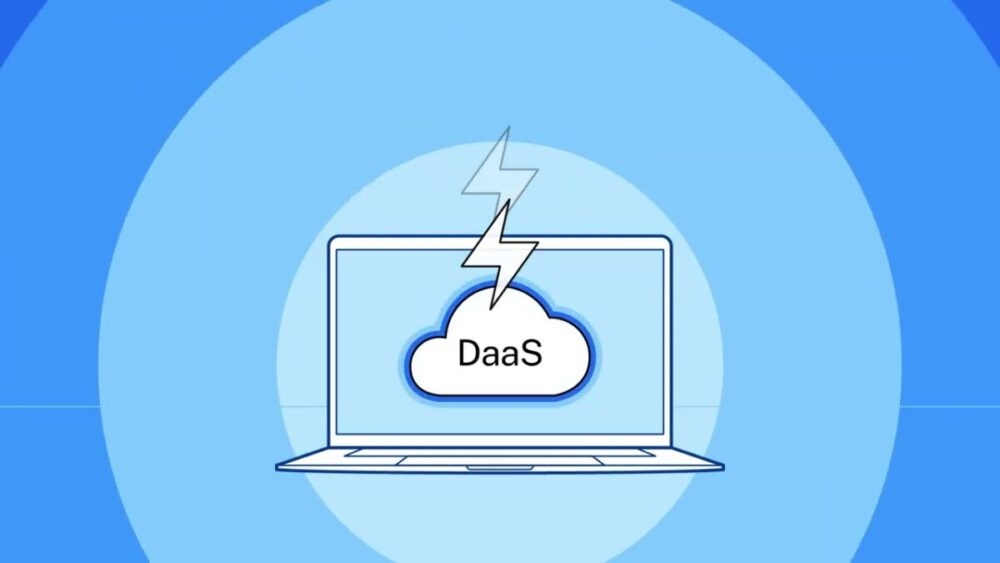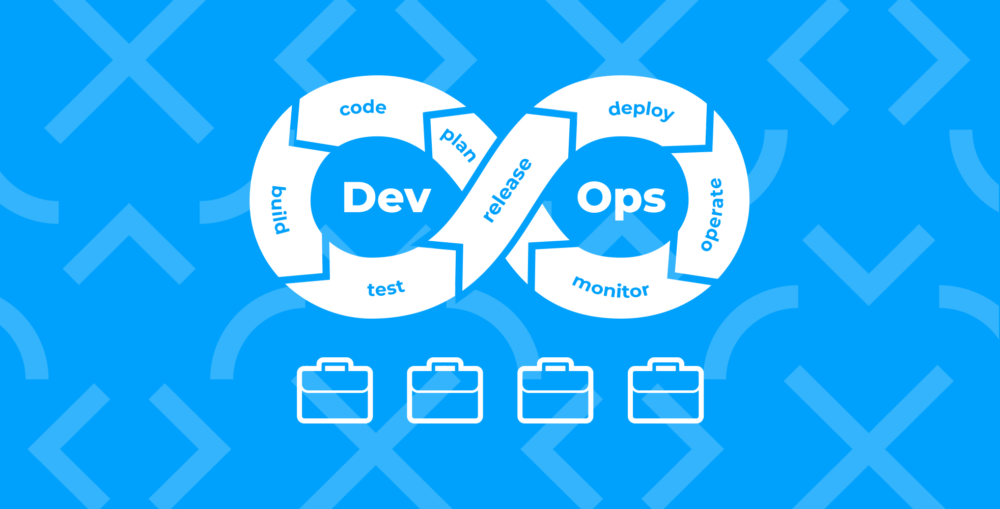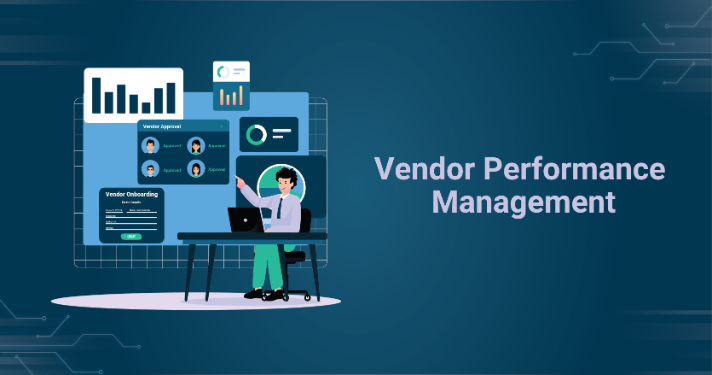DevOps as a Service (DaaS) is not just a buzzword—it’s a paradigm shift that’s redefining the software development lifecycle. This blog post peels back the layers of DaaS, an innovative approach intertwining development and operations seamlessly through cloud services. We will delve into its significance and impact, unraveling why it’s pegged as the future of software development. For developers, operations teams, and business stakeholders alike, understanding DaaS is becoming increasingly crucial in a world that demands agility and efficiency.
What is DevOps as a Service?
DevOps as a Service encapsulates a suite of tools and practices delivered through the cloud to enhance collaboration and streamline production. It extends beyond traditional DevOps by offloading various development pipeline tasks to third-party service providers. DevOps as a Service integrates development and operational functions into a unified service, reducing the complexity of managing infrastructure and toolchains. This model promotes a shared responsibility, where the service provider manages the continuous integration, delivery, and deployment processes, enabling teams to focus on building high-quality software.

Benefits of DaaS
The adoption of DaaS in software development carries with it a myriad of advantages. It fosters increased collaboration by knitting together previously siloed roles and processes. Efficiency gains are substantial, as automation minimizes manual errors and accelerates go-to-market timelines. Scalability becomes more manageable, with cloud-based resources dynamically adjusting to workload demands. These benefits collectively enhance the agility of businesses, equipping them to respond adeptly to changing market conditions and customer needs.
Key Components of DaaS
Automation, continuous integration (CI), and continuous delivery (CD) are the cornerstone of DaaS. Automation is the linchpin, removing manual bottlenecks, ensuring consistent builds, and facilitating rapid deployment. CI fosters a culture of frequent code integrations, reducing integration problems and leading to better collaborative development. CD extends this by automating the software release process, enabling a smooth and frequent flow of updates to the production environment. These components are crucial cogs in the DevOps as a Service machine, ensuring a smooth, efficient, and reliable software development process.
DaaS Tools and Platforms
Navigating the landscape of DaaS, one encounters a multitude of tools and platforms. These platforms enable the creation of fully managed build, test, and deployment pipelines, integrating seamlessly with other cloud services to provide a comprehensive DevOps experience. Choosing the right tool often depends on specific project needs, existing cloud infrastructure, and organizational expertise. If you’re looking for a platform that stands amongst the leaders in the domain, you should look no further than https://duplocloud.com/solutions/devops-as-a-service/.

Case Studies
Success stories abound where DaaS has been a game-changer. Organizations, from startups to multinationals, have embraced DevOps as a Service to address complex challenges. For instance, a prominent e-commerce company leveraged AWS CodePipeline to automate its deployment process, thereby reducing its feature release cycle from weeks to days. Another example is a financial services firm that adopted Azure DevOps to enhance collaboration among its global teams, resulting in a 50% decrease in time-to-market for new features.
Challenges and Concerns
Despite its many advantages, DaaS adoption is not without its hurdles. Security is a paramount concern, as reliance on third-party providers requires robust measures to protect sensitive data and ensure compliance with regulations like GDPR and HIPAA. Vendor lock-in is another potential downside, where organizations become overly dependent on a single provider’s ecosystem, risking difficulties if the need arises to switch services. Additionally, the cultural change needed to adopt DevOps as a Service can be significant, as it necessitates teams to fully embrace new workflows and collaboration models, often requiring a shift in mindset and breaking away from traditional silos. Ensuring smooth team dynamics and maintaining communication across departments becomes even more critical in this new environment.
Best Practices for Implementing DaaS
When it comes to implementing DaaS, a lot of things have to be taken into consideration. Selecting the right tools should align with the organization’s existing ecosystem and future scalability needs, considering both the technical and economic aspects of the transition. Building a DaaS team with cross-functional skills is vital to navigate both development and operational challenges, with a keen focus on DevOps principles and practices. Establishing clear processes ensures that everyone understands their roles within the DaaS framework, creating a coherent workflow that fosters transparency and accountability. Training and continuous learning are crucial as DevOps as a Service evolves, ensuring the team remains proficient with the latest methodologies and tools. Additionally, it’s essential to foster a culture of continuous improvement and innovation, encouraging teams to regularly evaluate and refine their practices.

The Future of Software Development
DaaS is not just transforming software development processes; it’s anticipating the future. Trends such as serverless computing, containerization, and microservices architecture are becoming mainstream, with DaaS at the forefront, facilitating these advanced practices. By providing an environment where innovation is continuous and scalable, DaaS enables businesses to leverage these trends efficiently, ensuring they remain competitive in an ever-evolving digital marketplace. This adaptability is crucial, allowing for rapid prototyping, testing, and deployment, which is essential in today’s fast-paced, consumer-driven market. Furthermore, as artificial intelligence and machine learning become more integrated into development processes, DevOps as a Service is likely to play a pivotal role in managing and streamlining these complex technologies.
Industry Adoption of DaaS
The momentum of DaaS adoption is increasing across various industries. From healthcare to finance, retail to manufacturing, organizations are integrating DaaS principles to enhance their software delivery capabilities. Although the pace of adoption varies, the trend is clear: DaaS is becoming an integral part of the software development strategy in numerous sectors. Statistics point to a significant rise in DevOps as a Service solutions, with a growing percentage of companies reporting improved performance and customer satisfaction.
Conclusion
DevOps as a Service is revolutionizing the way we think about software development and deployment. By enhancing collaboration, increasing efficiency, and providing scalable solutions, DaaS is crucial for businesses aiming to stay at the forefront of innovation. Throughout this post, we’ve explored the essence of DevOps as a Service, its components, benefits, and the strategic considerations for its implementation. As the software development landscape evolves, DaaS stands out as a vital ingredient for success.

Call to Action
For those ready to explore the potential of DaaS, the journey begins with understanding its value proposition and aligning it with your organization’s goals. I encourage readers to dive deeper into this topic, explore the tools, and consider the strategic impact DevOps as a Service can have. To further your journey, seek out additional resources, engage with experts, and perhaps start with a pilot project to witness firsthand the transformative power of DaaS in your organization.





